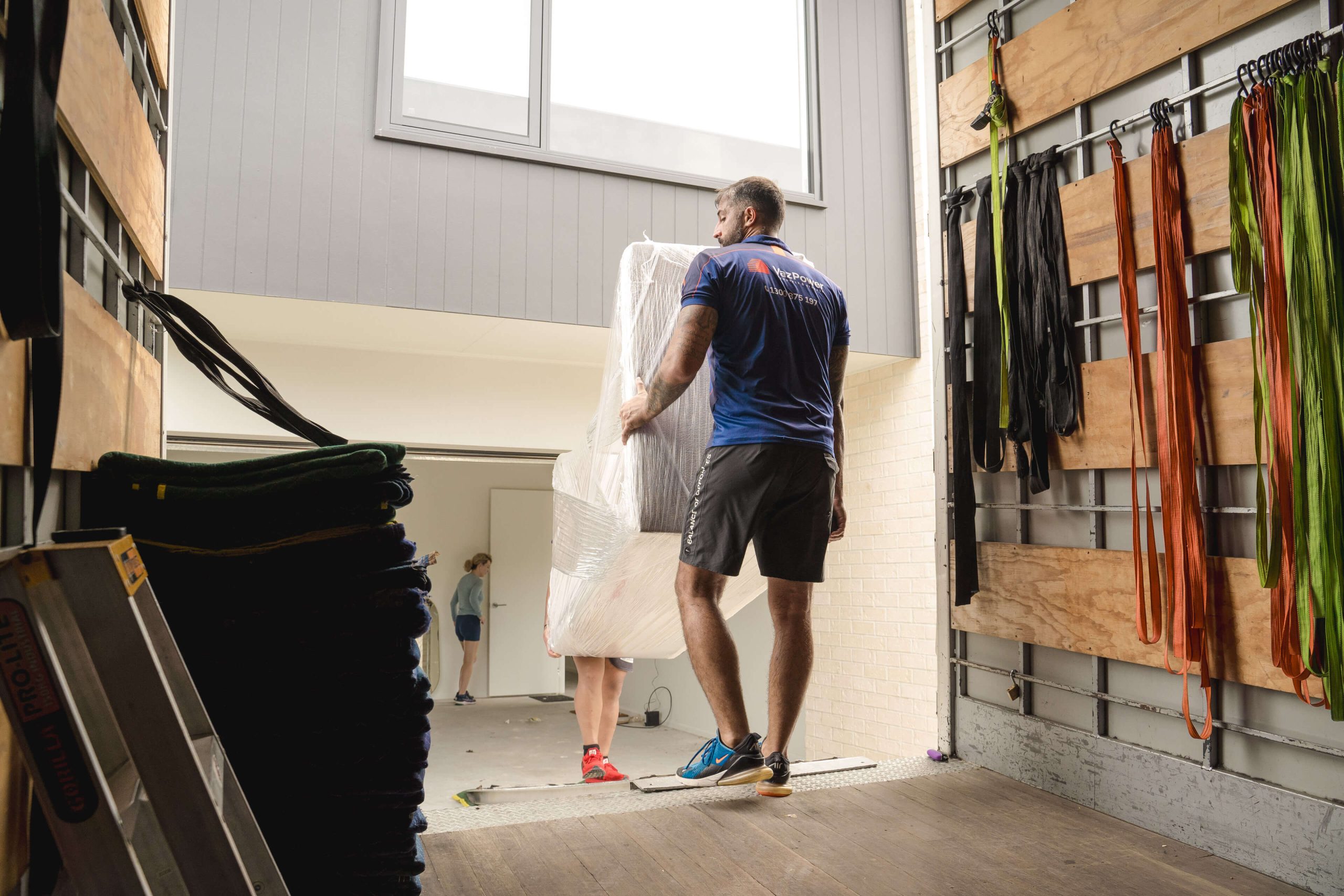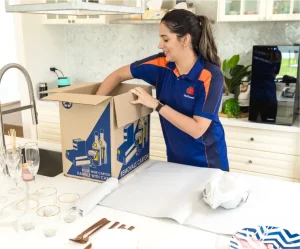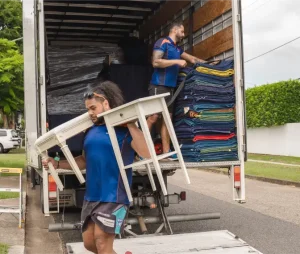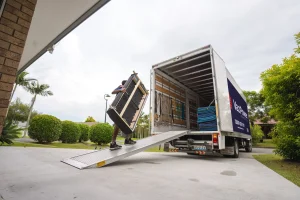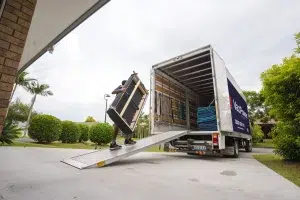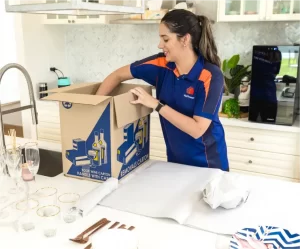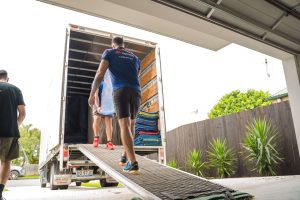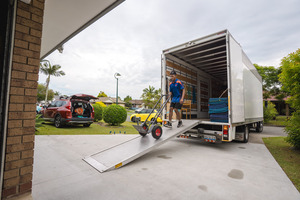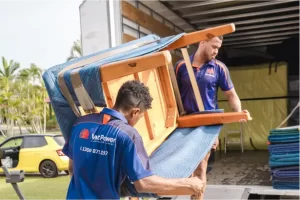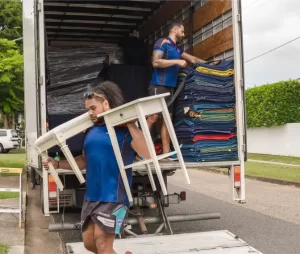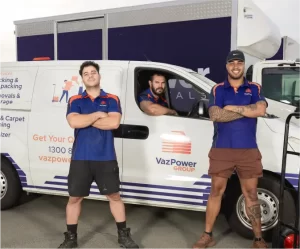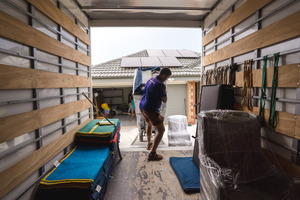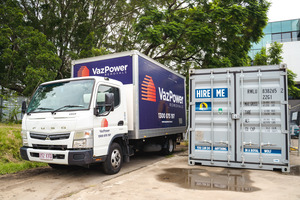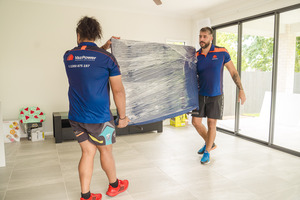Moving apartments takes a lot of work and you need to be careful with every detail. But you do not need to stress. If you get ready and ask for help when you need it, the moving process can go well. Here is all you need to know, from making your plan for the move to making your new place feel like home.
1. Plan Your Move Early
Start with a list of things you need to do. Book a moving service. Let your landlord or property manager know about the move. Go through your things. Choose what to keep, what to throw out, and what to donate. If you start early, things get much easier on moving day.
Living in an apartment can make moving tough. You might deal with elevators, parking rules, or tight hallways. If you know the rules before you move, you can stay ready. There will be fewer surprises and the day will go better.
2. Know the Building Rules
Apartments have different rules than houses. You need to check with building management for any moving guidelines. Some places ask you to book the lift or may allow moving at certain hours only. It is good to know this before moving day. When getting ready to move out of your apartment, make sure you know the building rules. Set a time to use the elevator if needed. Talk to management to handle any paperwork or get the needed permissions. This helps make your move easy and stops any last minute problems.
3. Declutter Before You Pack
Take this time to make things easier for yourself. Moving is a great reason to let go of things you do not use anymore. Start in the closets or that drawer where things just pile up. If you have not used something in the past year, you should think about letting it go. Sell, give, or recycle these things. When you have less stuff, you have fewer boxes to pack. That also means you can use fewer boxes, maybe from local businesses, which is better for everyone.
4. Packing Tips to Save Time and Space
When you start to pack for your new place, try to think in a simple way. Wrap your fragile items with soft things, like towels or bed linens. This will save you from using too much bubble wrap. It also helps pack two things at the same time. Make sure you label every box by the room it belongs in. Put a small note about what’s inside each one. You will be glad you did when you want to find your coffee mugs that first morning in your new place.
For heavy items, use small boxes. A big box looks good, but it makes things hard to lift and move. Small boxes are easier on your back, and you can carry them with no problem. Be sure to tape the lids or loose parts on all appliances. This keeps them from coming open or getting lost on the way.
If you are moving in or out of an apartment, keep a checklist. Check there is no damage in your new or old place, and take photos for records. Test every appliance and check that all units work to be safe. Don’t miss the smoke detectors. Change your address where needed. Check and sign all paperwork. Clean your place well, before or after your move.
When packing, label every box with the room it’s meant for. Keep a bag or box ready with must-have items for your first night. Put padding around fragile items, and pack them with care so nothing breaks on the way.
5. Protect Your Apartment
When you move out, you can avoid extra fees by keeping the apartment safe from damage. Try to use door stoppers and put covers on the corners. This helps stop you from hitting the walls or making marks on the floors. Start to collect packing boxes early to help with your move. Many buildings have rules about damage. A small amount of work now can help you keep all of your deposit.
6. Moving Day: The Logistics
If your building has a lift, find out if you need to book it. Some buildings use a mat in the elevator to stop the floor from getting scratched. Make a clear plan for getting your things out from the apartment and to the moving truck. Let the moving company know about any parking rules or tight corners they should be aware of.
Don’t forget to pack a small moving day kit. The kit should have personal items, like snacks and water. Bring phone chargers, basic tools, and toiletries. These things will help you when your other items are packed away. This can make the day feel less stressful for you and be easier to handle.
6.1. Tips for Moving with Pets, Kids, and Elderly Relatives
Getting ready to move with pets, kids, or older family members needs some extra care. You want the day of the move to feel safe and easy for everyone. Try setting up a spot for pets where they feel comfortable. A friend’s home can also help keep them calm during the packing. On the day of the move, don’t plan work or set up anything important. Even a first date is best saved for another time. It can be good for kids to help with packing some personal items. Letting them do this can help them feel part of what’s going on.
Elderly relatives can need extra help when you move. So, you might want to get professional movers. They know the special needs of older people and can give good support. This careful planning makes the moving process go well. It also helps everyone settle in the new home without stress.
6.2. Hiring vs. DIY Moving: What’s Best for You?
To move to a new place with pets, kids, or elderly family, you need to plan ahead and be kind. Set up routines while you go through the moving process. This can lower stress for everyone. If you have pets, let them explore the new place a bit at a time. This helps keep them calm. When moving with kids, get them involved. Make the move feel more like a fun trip. For elderly relatives, check that both the old home and new place feel safe and comfy. Think about what they need most. When you put everyone first, the move goes smoother. This helps each person feel happy and ready to join the new community.
7. Cleaning Up
Once the packing is all done in your old home, it’s time to clean. If you want to get your bond back, this is very important. Pay most attention to the kitchen and bathroom. These places often need the most work. Fill in little holes from things like picture hooks. Wipe down all surfaces well. You can pay a cleaner to do this, or you can do it yourself. But if you clean it on your own, make sure every part is done well so you don’t get charged extra.
Remember to empty the fridge and freezer
Give them a good clean and leave the doors open to stop mildew from growing. These small details really help. They make sure you get your full deposit back.
7.1. Cleaning Guide – To Bond / End of Lease Standard
Taking care of pets, kids, or elderly relatives during a big move can feel tough. It’s good to plan ahead and be kind. Make sure there is a comfortable spot for them to rest. This helps lower stress on moving day. You can use moving boxes and some familiar things from home. This can help everyone feel less worried.
You need to know what each person or pet needs at this time. Some may have fragile items to pack. Others, like kids, may need things to keep them busy. A professional mover that helps with pets can also bring you peace of mind on the big day. They will know how to handle small details. This help means you all feel more ready to go into the new community. Paying attention to these details can make the move better for the whole family.
7.2. Final Walkthrough and Inspection Checklist
During the moving process, you need to think about the comfort of your pets, kids, and elderly relatives. Try to make your new home feel warm and friendly for them. Small things like keeping their blankets or toys nearby can help them feel safe and loved. On the day of the move, it is important to plan for their safety. Keep them busy or set up a quiet space for them, away from all the noise. Talk to your family about the big move and work together as you start life in a new community. When you put their needs first, you help them feel better about this change and make it easier for everyone to settle in.
8. Settling In
When you move into your new house, try to unpack in a smart way. Start with things you need first, like your bedding, bathroom items, and basic kitchen stuff. This helps you feel okay even if you still have boxes left. Go and say hello to your neighbours. A simple greeting can go a long way, especially when you are in an apartment and see these people all the time.
Think about packing a box or two with items you will need on your first day. Put things like cleaning supplies, light bulbs, scissors, and some simple kitchen items in it. This will let you get to whatever you need right away without opening every box you have.
8.1. After-Move Checklist for Each Room (Kitchen, Living Room, Bedrooms, Bathrooms)
Moving with your pets, kids, or older family members needs a special way to help you all feel at ease in your new home. You should think about the needs of your family, as this can make the moving process less stressful for everyone.
When you bring pets to a new place, make sure they have the items they already know and love. Give them a calming spot in the new home. For kids, you can let them help with packing and setting up their own rooms. This can make them feel excited while you move. You also may want to request time off work, so you have enough hours to help your family settle in.
Elderly relatives often need help to handle delicate items and to understand the details of moving. Be there to help and support them along the way. It is important to talk to your family and keep a close connection, so everyone feels welcome and happy in their new community.
8.2. Storage Solutions and Choosing the Best Storage Bins
Moving to a new home with pets, kids, or elderly family members needs good planning. You want them to feel safe and comfortable during the moving process. It helps to keep pets in a quiet space, with things that feel like home to them. This way, they feel less stress and can get used to the change. For kids, it is good to let them help pack their personal items. This gives them something to do. It also helps them feel part of the move and less stressed.
Elderly family members may need you to go slow. Make sure you give them extra time and keep their important documents close by. You do not want to lose anything they might need. Using professional movers can give you peace of mind. You can then focus on helping everyone get used to your new home.
9. Get Your Utilities Set Up
Before you move, take time to set up your electricity, water, and internet so they get switched from your old place to your new address. You don’t want your first night to be without power or WiFi. This is a small thing, but people sometimes forget to do it when they move.
Also, don’t forget to update your address for all deliveries, subscriptions, and important services. If you do this soon, you will have fewer problems with lost mail or not getting your bills on time.
9.1. Internet and TV Tips for Your New Apartment
Moving with pets, kids, and elderly relatives needs extra care and planning. It helps everyone feel safe and comfortable. For pets, the most important thing is to keep their normal routine when you can. Make sure their essential items are packed in a place you can get to quickly. A favorite toy can help them feel calm.
Kids do better if you set up a spot for them to play while you are busy on move day. You can also let your children help pack their things. This makes them feel like they have a part in the move.
If you are moving elderly relatives, try to keep what they bring light. Check in with them often. This will let them feel sure about the changes. These steps will help make moving into a new home easier, for everyone involved.
9.2. What Happens to Your Home Security System When You Move?
Getting ready for a big move can be tough, especially if you have pets, kids, or elderly family members. You want everyone to feel good and safe during the moving process.
For pets, try making a quiet spot for them with some things they like. This helps them feel calm when there’s a lot going on. Kids feel better when they have some fun things to do or a space to play in. Elderly family members might need help with heavy items. Be sure they can get to their important documents without trouble.
When you think about what each person or pet needs and use a moving checklist, you make it easier for everyone to settle into your new home.
10. Keep Track of Important Documents
Set aside all your important paperwork. This includes lease agreements, inventory lists, and related expenses. Keep them all together in a folder that you can find easily. When you move, things may get lost. But if you have these documents with you, it will help if any problems come up.
10.1. What to Photograph During Move-In or Move-Out Inspection
Handling a big move with pets, kids, or elderly relatives takes planning and care. The comfort and safety of everyone is important and it can help lower stress for the family. For pets, having their favorite toys around can help them feel at home in the new place. When kids help with the moving process, and pack their own personal items, it can make them feel safe. Elderly relatives may need extra help with delicate items and any heavy lifting. A moving company can help with special moving services, so think about your moving costs and the peace of mind you get before you choose a DIY move or go with moving professionals. Knowing the moving costs will help you make a good plan for your new home and keep your budget on track.
11. Consider Moving Insurance
Another thing you should think about is getting moving insurance from your insurance company. Accidents can happen at any time. Having your things covered can give you peace of mind. Ask your movers if they have insurance for your move, or if you will need to get it on your own. It’s good to be ready in case anything comes up during the move.
Final Thoughts
Moving into a new apartment or getting out of one is all about making things easy and being ready for what’s next. Start by planning your move early. Focus on packing your things in a smart way. Always remember to follow the building rules. A little bit of thinking ahead can help you get settled in your new home with less stress. You will be set to relax and enjoy your fresh start in your new apartment.
If you are planning an apartment move, Vaz Power wants to help make it easy for you. No matter what, be sure to plan and get ready before moving day. This is the best way to handle any move. Before you get into your new apartment, check out important spots. Look at the plumbing, electrical outlets, appliances, doors, and windows. You should look for things that are broken or if there are spots that need repairs. This will help you keep your security deposit safe. Making these checks will help make your move into your new home smooth and low stress.
The Cost of Moving and Storage Options
To get ready for your new home, it is important to know about moving costs. These costs can change a lot. The amount you pay depends on how far you have to go. It also depends on how you move and what storage options you use. You can choose to get help from professional movers or move on your own. Plan your budget for essential items and other related expenses too. Think about the moving truck and what you might need. This way, you will feel ready for all parts of the move.
Storage options can make a big difference in costs, mainly if you need to store fragile items or secure outdoor furniture before you move in. Checking with local businesses for affordable storage options can give you peace of mind.
Downloadable and Printable Moving Checklists
Moving gets much easier when you use clear moving house checklists. These lists guide you through every step of the process. When you have downloadable and printable checklists, you feel less stressed, and the work seems more simple. The lists help you stay organised, from packing fragile items to sorting the plans for the day of the move. This means you will not miss anything important.
Also, they help you feel at ease, so you can focus on getting used to your new community and not worry about problems. With these tools, every part of moving to your new community and address is made simple and quick.
Preparing for Special Circumstances: Moving with Disabilities
Moving to a new apartment can feel like a big job when you have disabilities. It is important to think about what you need from the start. A smooth moving process helps you feel comfortable in your new home. You should work with moving companies that know how to help people with different needs. These movers may offer ramps or use special tools for heavy or fragile items.
Talking to your property manager can help you find more ways to get help. When you make a moving checklist, be sure to include essential items just for your situation. This will help you feel peace of mind during the move. You can feel good and ready in your new place when everything you need is packed and you are well-prepared.
The Fascinating Origin of National Moving Month
National Moving Month is in May. It started after the war when a lot of families moved to new homes because the economy was growing. The American moving industry saw this and made May the busy time for apartment moves. This month is here to help people make the moving process easier and to help them know more about how moving works. It helps people learn about things like why it helps to hire professional movers and what their related expenses might be. This gives everyone peace of mind when they get ready to join a new community.
Your First College Apartment Checklist
Moving into a new home for your first time in college means you need to plan well. When you move to a new place, start with the essential items like bedding, kitchen things, and toiletries. Make a list and put what you need first. You will want to add basic tools and light bulbs to your list, because you may need them to fix and light up your new space.
You should use packing boxes for fragile items. Make sure they have bubble wrap around them, so the things do not get broken. Pack some personal items that make the space feel more like home for you.
Think about storage options too. You may need a spot for outdoor furniture or other stuff you may have. This helps keep your new community space comfortable and neat for all.
Getting your checklist ready before you start moving will make the whole moving process go easy and smooth.



